Notes
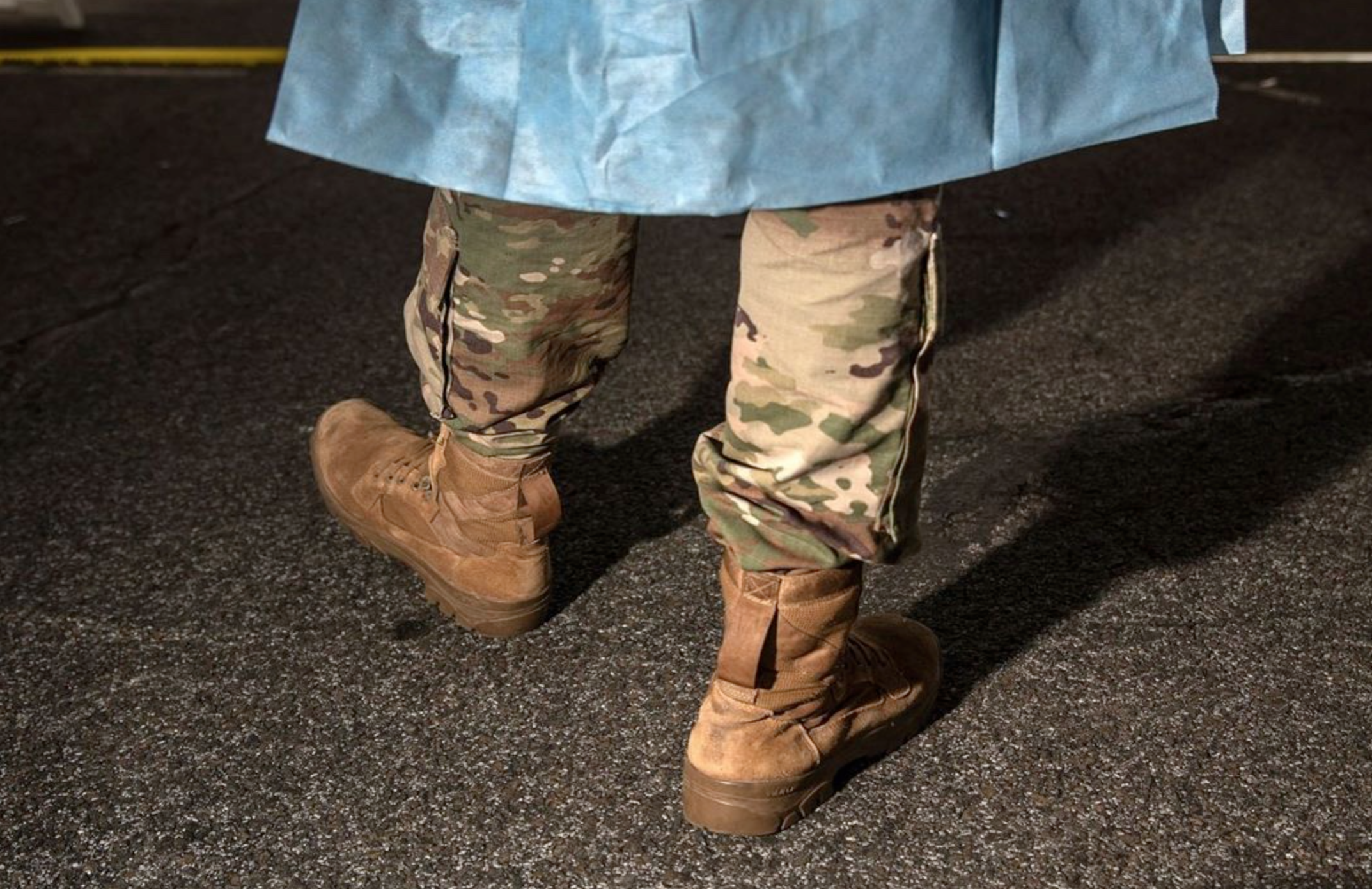
As Militarism Runs Rampant, Even the Virus Falls Victim
The display of military force in America’s streets has been so furious and overwhelming, it has even made Covid and the valorizing of medical workers disappear.
By Wendy Kozol
On June 2, members of the Washington, DC National Guard joined forces with the Metro police to block access to the Lincoln Memorial. The photographer’s low angle shot emphasizes the expanse between us and the coordinated apparatuses of state control—seen here in the yellow caution tape and metal barriers, in helmeted city police and rows of soldiers standing beneath the portico of the Memorial. Preventing access to one of the most iconic symbols of American democracy speaks loudly in this present moment, as once again black and brown people face state violence when they demand that which is their due: recognition of their humanity and their rights.
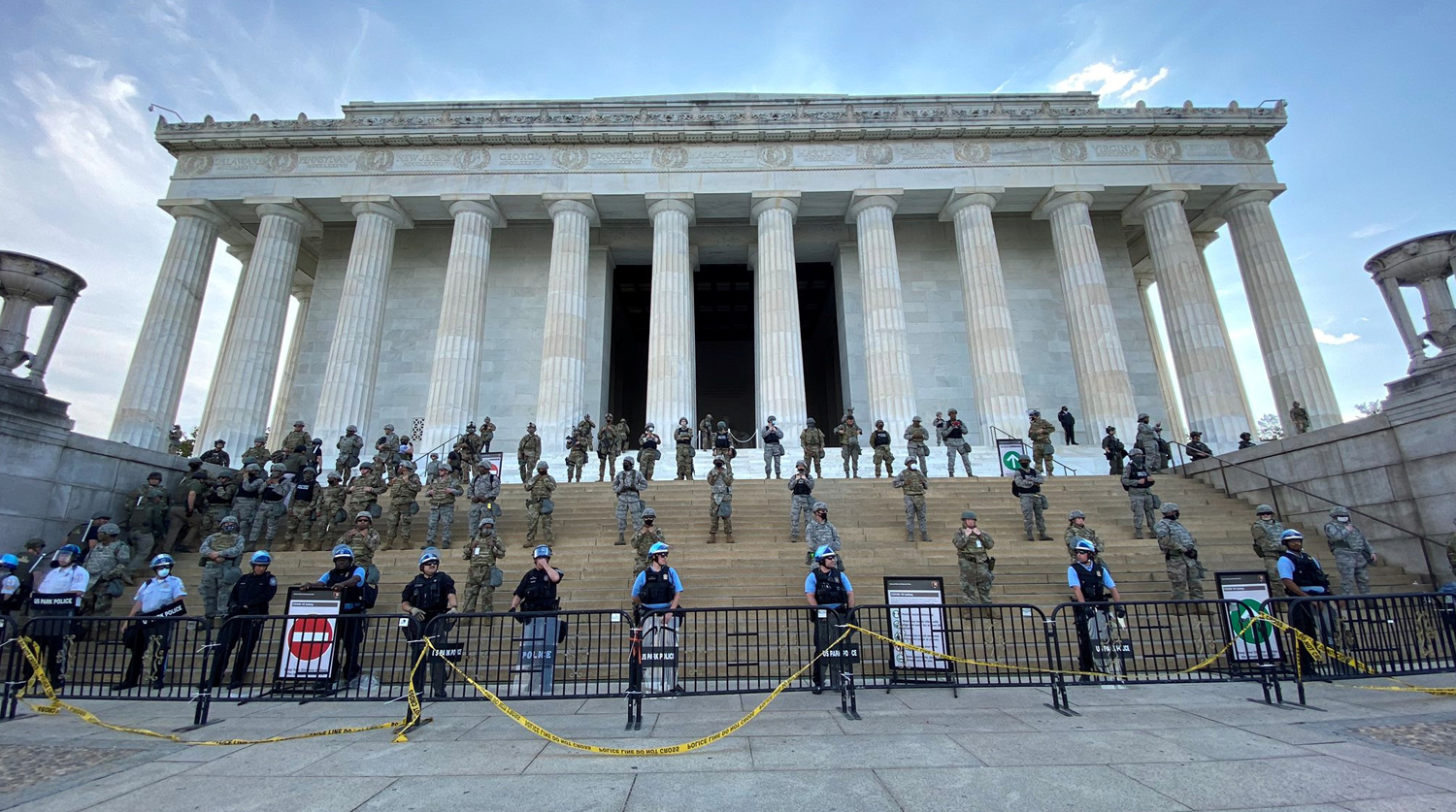
Caption: Law enforcement personnel stand guard on the steps of the Lincoln Memorial as protests spread across U.S. cities in reaction to the death in Minneapolis police custody of George Floyd, in Washington, D.C., U.S. June 2, 2020, in image obtained from social media.
While the Trump administration champions the use of military force to impose law and order, former and current military leaders, including Jim Mattis and Mike Mullen, have denounced these deployments. Even the current Secretary of Defense Mark Esper qualifiedly agreed that military force was not warranted at this time.
I have long joined other critics in condemning US militarism at home and abroad. And while I do appreciate that we are hearing from top military officials how dangerous it is to militarize the state’s response to peaceful demonstrators, their statements hardly amount to a refutation of the military’s pronounced role in the domestic life of this country.
Quite the contrary. Standing against this moment of disquiet among the military leadership is a pervasive reliance on militarized symbols and imagery in American culture. From the war on poverty to the war on drugs, popular rhetoric routinely invokes war metaphors.
Recently we have seen examples of the nation’s militaristic atmosphere in news photographs where military symbols are connecting ideals of patriotism to the “fight” against this virus and the Covid pandemic.
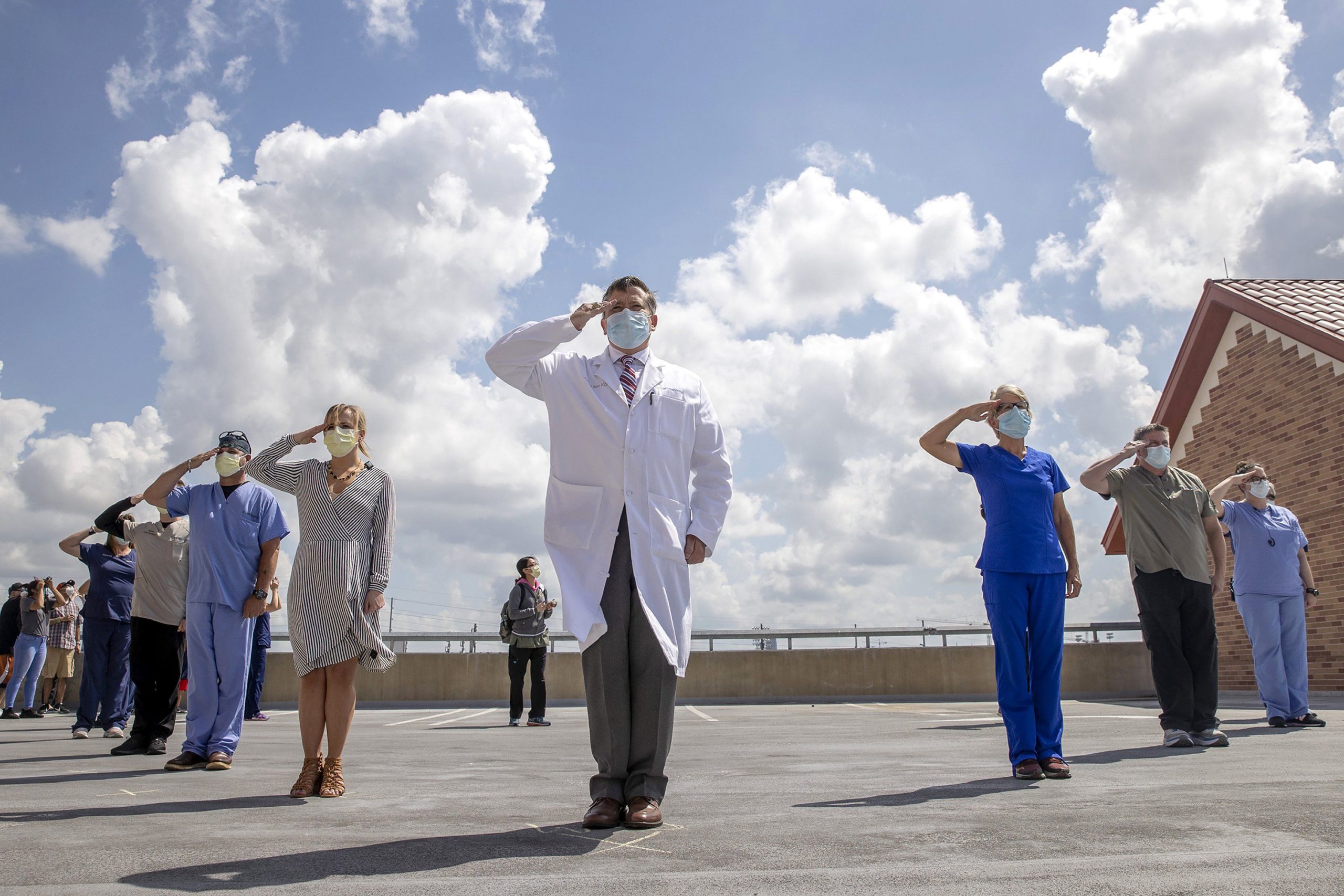
Caption: Dr. Andrew Moore, center, chief medical officer at St. David's Medical Center, and other employees who served in the military saluted May 13 as the U.S. Air Force Thunderbirds flew over Austin to honor front-line workers.
For example, at St. David’s Medical Center in Austin, TX on May 13, healthcare professionals with military backgrounds are pictured standing at attention in a V-formation, saluting US Air Force Thunderbirds that have flown overhead to honor their work with coronavirus patients. Against a bright blue sky with puffy clouds, the camera positions the viewer to look up at, and to look up to, these ramrod straight figures. Bright light, wispy clouds, and celebratory actions underscore this feel-good message about the bravery of healthcare workers in the battle against the coronavirus.
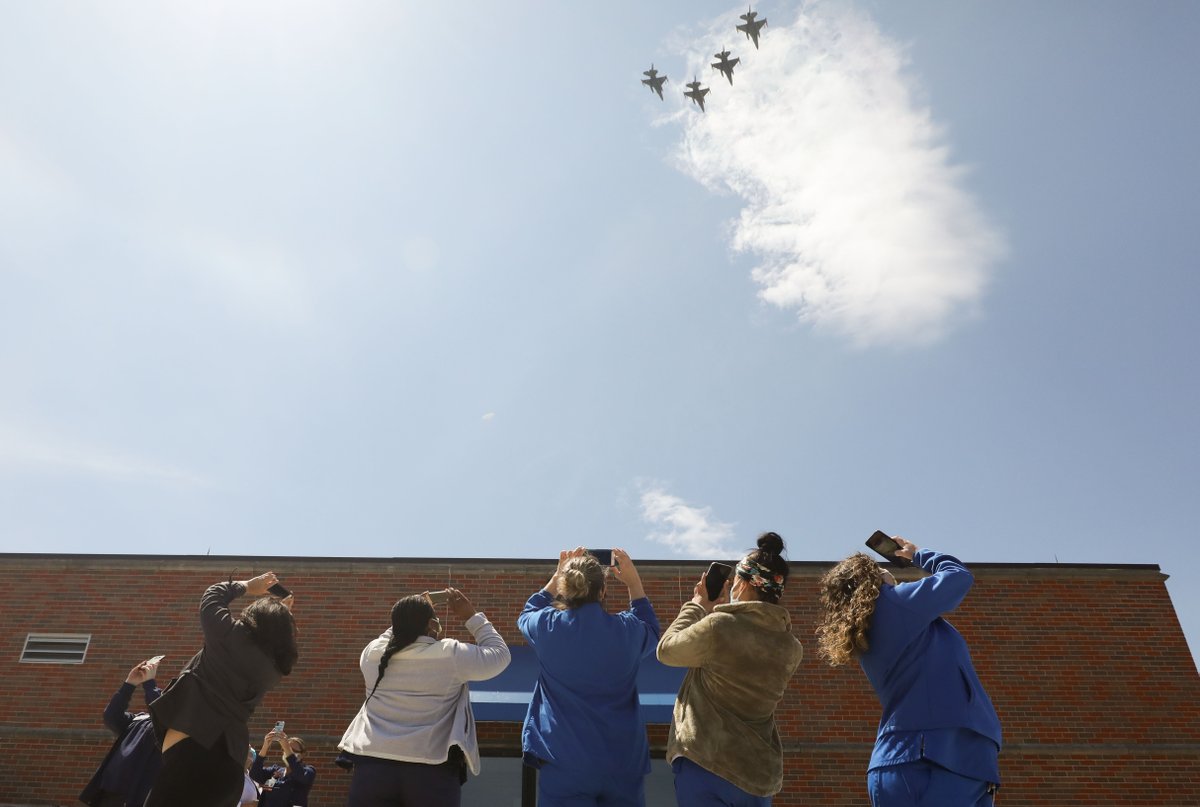
Caption: Healthcare workers film on their phones as the Ohio Air National Guard’s 180th Fighter Wing does a flyover in F-16’s over Mercy Health St. Vincent Medical Center in Toledo on Wednesday, May 6, 2020.
In this photograph made at Mercy Health St. Vincent Medical Center in Toledo, OH, healthcare workers turn their phones skyward to take videos of an F-16 flyover in their honor. Planes at the top of the frame pull our eyes upward across the dominant expanse of blue sky. As in the previous picture, viewers are once again asked to look up at and, presumably, to admire healthcare workers whose enthusiasm for military prowess is presented as model behavior for those on the front line.
Visual imagery that ties health care to militarism is dangerous because it obscures actual conditions in war zones. Such associations represent US actions abroad as benign or innocent maneuvers equivalent to fighting a disease. Additionally, invoking war metaphors to describe the Covid pandemic also denies the profound inequalities facing people from marginalized communities, including greater job insecurity, less access to medical treatment, and lower survival rates.
Though it has dominated news headlines for months, Covid was suddenly and unexpectedly displaced when protests condemning police brutality against African Americans mobilized across the nation and across the world. Along with their pictures of crowds and individual activists, photographers have been capturing numerous scenes of soldiers patrolling the streets of US cities and barricading urban spaces.
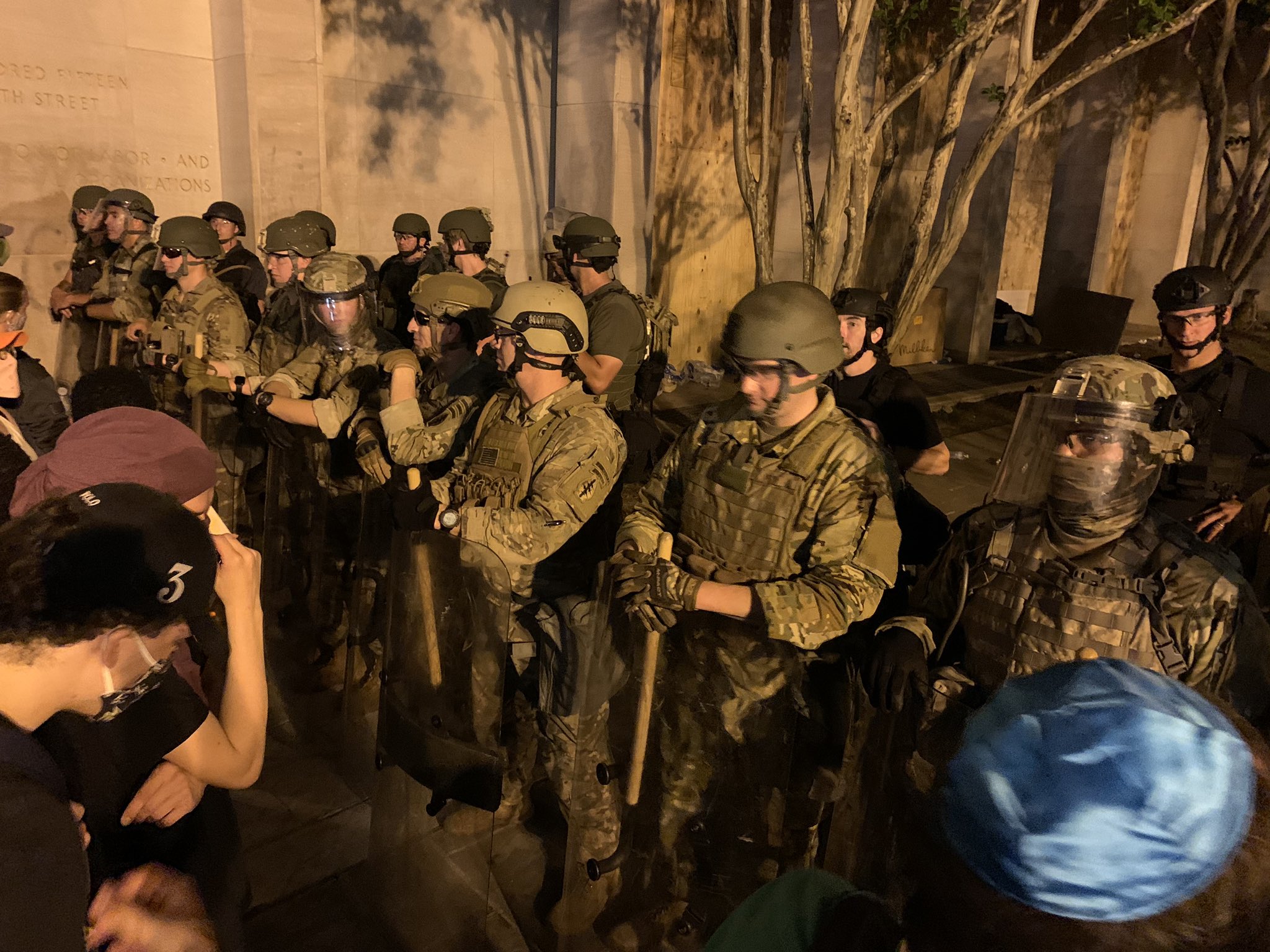
Caption: 19th Special Forces Group (SFG-A) US Army National Guard man a perimeter north of the White House, Washington DC, June 3rd, 2020
This photograph from June 4, for instance, brings us within breathing distance of a tense standoff between US soldiers and demonstrators on a Washington, DC street. It places us among the protesters, who appear to press forward against the soldiers as they stand in formation with rifles and batons in hand. Note, too, that these soldiers are wearing generic tactical gear with no name tags or insignia. This anonymity is part of an authoritarian strategy, as historian Heather Cox Richardson warns, to limit accountability and mute distinctions between official law enforcement and other gun-toting vigilantes.
On DC city streets, the federal government’s willingness to flout conventions by allowing patrolling soldiers to remain anonymous stands in sharp contrast with the state’s increased use of surveillance against demonstrators.

Caption: National Guard personnel are seen during a protest near Centennial Olympic Park in Atlanta, June 1.
In this final photograph made on June 1st near Centennial Olympic Park in Atlanta, multiple rows of soldiers form a barricade around the Olympic rings. Hundreds of soldiers arm-in-arm engulfing this symbol of global goodwill strikes a painfully ironic note about this armed response to peaceful protest. Stretching out across the width of the frame, this human barrier of faceless soldiers belies many of our common assumptions about democratic freedoms in the US.
As we try to make sense of these displays of military force on US city streets, we also should take note of how quickly the virus and the valorizing of medical professionals has been buried by the White House and disappeared from the media. The fact that media attention on the Covid pandemic (with all its martial analogies) has been subsumed by literal militarization exposes just how easily metaphors of war adapt to different needs of the state.
Photo: John Moore/Getty Images Caption: A U.S. National Guard medic awaits patients at a drive-thru testing center at Lehman College on March 28, 2020 in the Bronx, New York City. The center, opened on March 23 at Lehman College, can test up to 500 people per day for COVID-19.
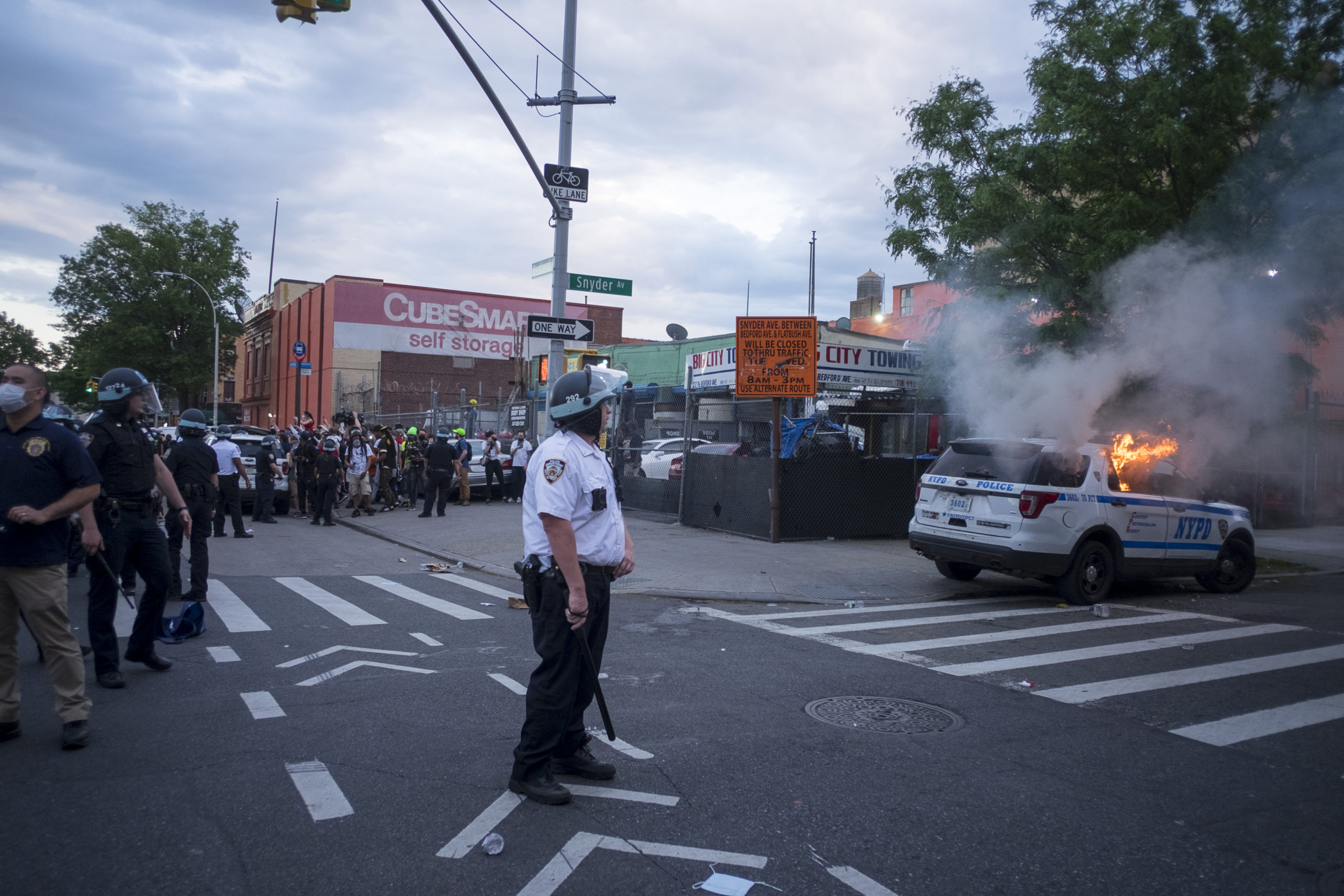
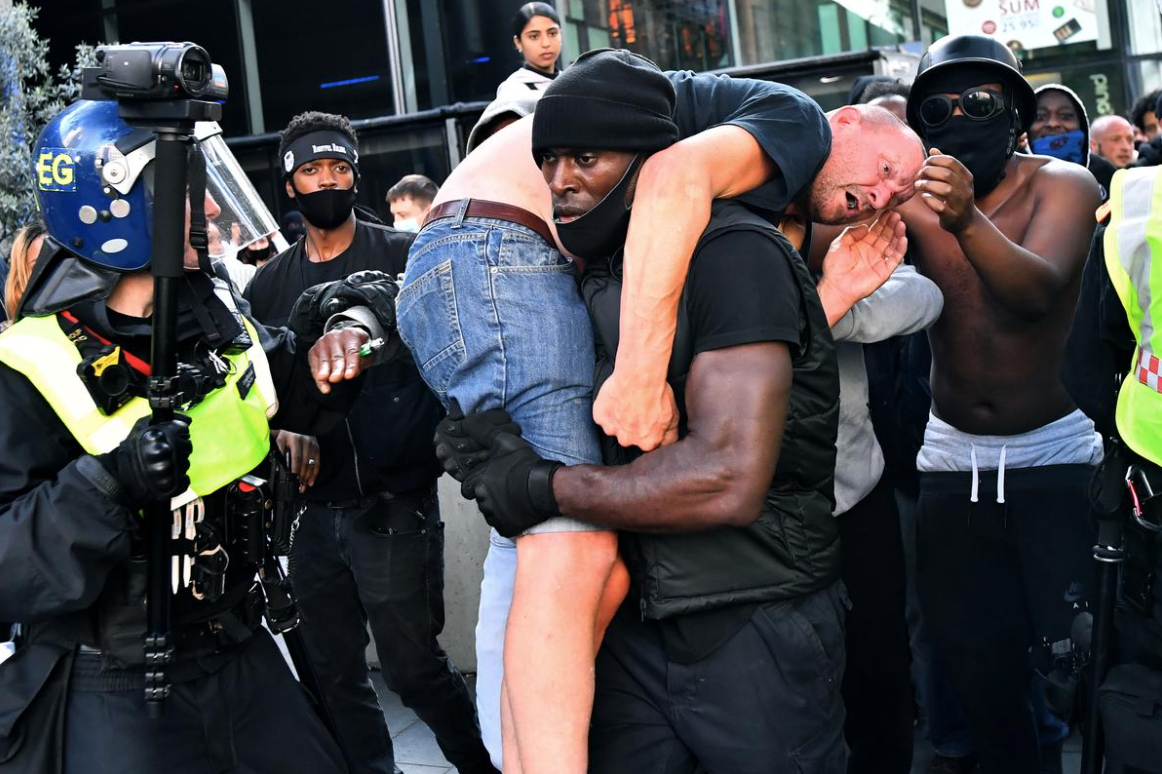
Reactions
Comments Powered by Disqus